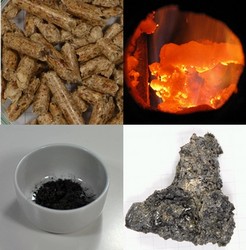Improved wood pellets through better testing
The aim of the ASHMELT(opens in new window) (Development of a practical and reliable ash melting test for biomass fuels, in particular for wood pellets) project was to investigate existing testing methods and help overcome operational problems due to ash-related issues. Standards, specifications, analysis and accreditation schemes help the buyer to identify the wood pellets that are most suited to the purpose for which they are needed. The European standard for solid biofuels, EN 14961, describes three grades according to virgin fibre and ash content. A high ash content indicates the presence of contaminants such as too much bark and moisture, that can damage wood pellet boilers. In particular, the burning of wood pellets can sometimes lead to lumps of residues that are unable to burn and result in the boiler clogging up. Project partners therefore conducted a detailed investigation to determine ash melting behaviour and content of different ash-forming elements in pellets. Nine different currently applied methods to determine chemical and physical fuel properties were reviewed and used to determine ash content by heating the sample under specified conditions. The rapid slag test, CIEMAT ash test and the Danish Technological Institute slag analyser were shown to give a better measure of performance. With this as a starting point, project researchers selected 15 different wood pellets as well as agricultural residues in pellet form. In addition, 'exotic' fuels such as distillers dried grains, which are usually used as nutrient for cattle, were combusted in a small-scale biomass boiler. Specifications for describing different grades of wood pellets were set according to the results of their ash-melting behaviour. The efficiency and reliability of the heating system depended on the quality of the pellets, which depends not only on the standard of the product as it leaves the factory, but also on the way the product is used. ASHMELT will benefit pellet producers by enabling them to produce fuels with defined slagging qualities and boiler manufacturers by allowing them to engineer combustion appliances for dedicated fuel qualities. This will help to open up the future fuel market and allow it to become more sustainable when making more resources applicable for use in small-scale applications.







